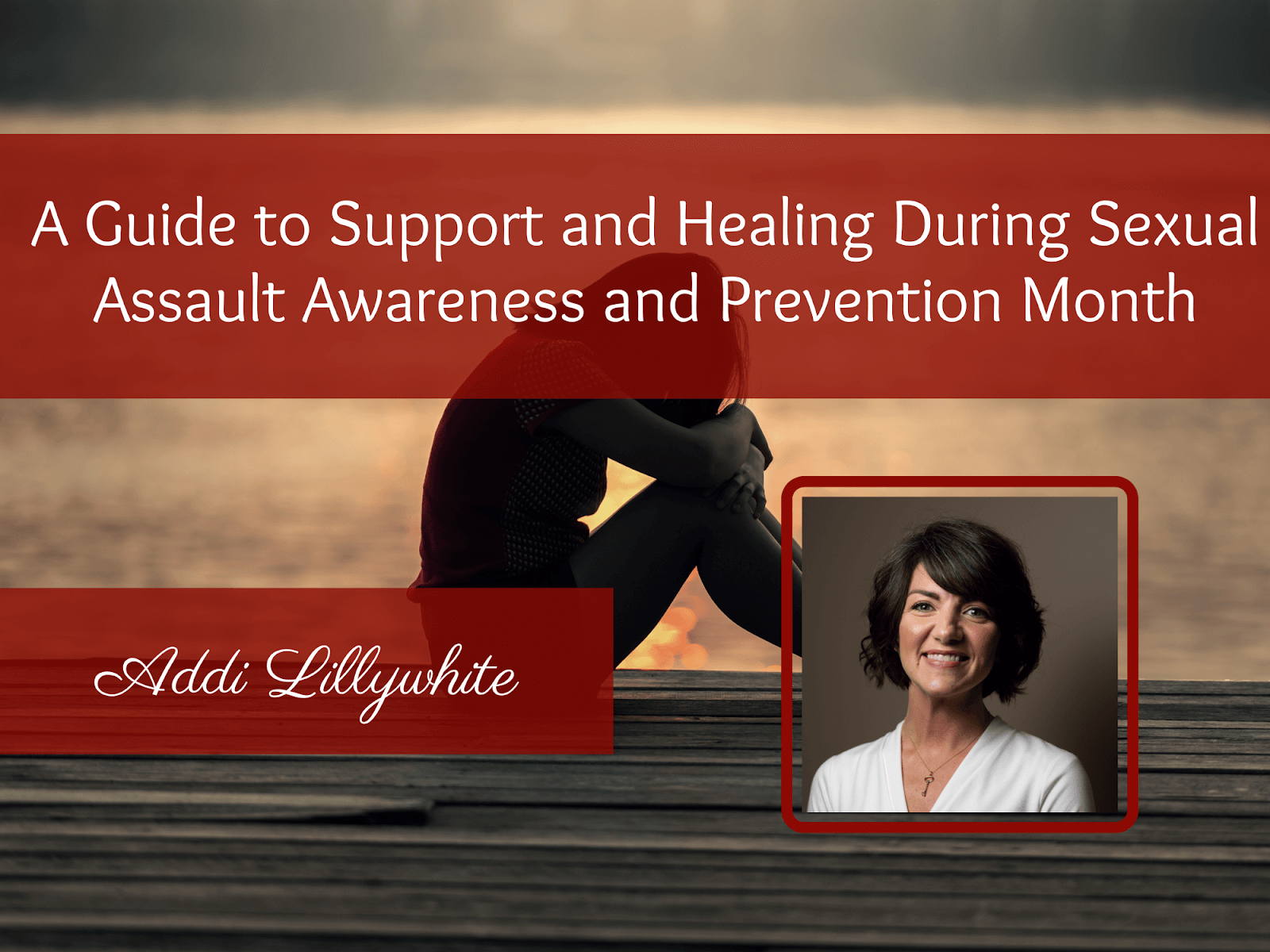April is Sexual Assault Awareness and Prevention Month. Every 68 seconds, an American is sexually assaulted. Although unfortunately common, we recognize the impact of sexual violence on individuals and communities. We stand in solidarity with survivors in their journey towards healing and justice.
We invited Addi Lillywhite to speak on this topic. She is a Licensed Marriage and Family Therapist Associate (LMFTA) and a counselor at Kenosis. She explains the aspects of sexual assault awareness and prevention to shed light on the importance of understanding and support for survivors.
Our goal with this blog is to educate, empathize, and advocate to create a safer and more supportive community.
The Importance of Sexual Assault Awareness
Even if you haven’t experienced sexual violence, it’s likely someone you know has. Addi said it’s estimated that between 25-33% of women will be the victim of assault, abuse, or rape during their lifetime. Think of how many women you know and imagine that one in three or four of those women have been or will be the victim of sexual assault. This is a serious issue.
Addi shared, “It was one of the most surprising things to me when I became a therapist. We regularly ask questions about a client’s history and if they have been the victim of abuse in our first sessions to understand their personal history and background. I experienced, for the first time in my life, the astonishing number of women who answered that question with a yes.”
Sexual assault awareness plays a significant role in promoting safety, fostering understanding, and preventing instances of assault. By increasing awareness of sexual assault, we can:
- Educate people about the warning signs, risk factors, and appropriate responses to sexual assault
- Encourage survivors to come forward and seek help
- Challenge harmful beliefs and behaviors, such as victim-blaming or minimizing the seriousness of assault
- Drive changes in legislation and policies to better protect survivors and hold abusers accountable
Sexual Assault Prevention
Awareness is the first step and a crucial part of prevention. If we are aware of the dangers and prevalence of sexual assault, we can take appropriate action to keep ourselves and others safe.
To prevent assault, Addi gives us these tips:
- Avoid dangerous situations
- Communicate limits and boundaries clearly to others
- Be assertive and respond physically if necessary
- Trust your gut instincts
Addi reminds us that it is not our fault if we or others are assaulted. The responsibility lies with the abuser.

Coming Forward
Sexual assault is often surrounded by silence and stigma. By speaking out, survivors help break this silence and challenge the societal norms that perpetuate shame and blame. This can contribute to creating an environment where survivors feel more comfortable seeking support and justice.
If someone confides in you that they have been sexually assaulted, Addi shares some appropriate responses:
- Believe and support them.
- Reassure them that they are not to blame.
- Respect their privacy, as it is a deeply personal matter and their story to tell.
- Allow them time and space to heal at their own pace.
- Help direct and connect them to resources (medical help or counseling) as they are ready to receive it.
- Express empathy by saying, “I am sorry this happened to you,” or maybe, “I don’t know what to say, but I am here for you.”
It’s scary to come forward and share your story, but it can be an empowering act for survivors, giving you a sense of agency and control over your narrative. It allows you to reclaim your voice and assert your right to be heard and believed.
Therapy for Sexual Assault
Therapy can provide a safe space where survivors can explore their healing journey, build coping skills and strategies for themselves, shed heavy feelings of guilt and shame, and begin to take those important steps on their desired journey!
Addi explains her experience helping women cope with their experiences. “I see common struggles such as feelings of guilt and shame. Many experience symptoms related to traumatic events, which are widely varied for each individual and may be mental and/or physical. Some might experience flashbacks, trouble sleeping, headaches, or panic attacks, just to name a few.”
Addi also shared a story of a client who was a victim of sexual assault in college:
“I recently worked with a client who realized she was carrying feelings of guilt and shame ever since the event. She tried to seek help from university officials but felt that she was blamed for the abuse. The abuser was not punished. In therapy, she was able to finally acknowledge that what happened was not her fault, which changed how she viewed herself even as a mom, wife, sister, and woman in general. She was able to reduce negative self-talk and overthinking spirals, regain feelings of control and trust in herself, and increase her overall motivation. She was still in the healing process when she left therapy because it’s a journey, not a destination. Healing happens on an individual timeline, not on the therapist’s timeline. However, she had a greater sense of hope for the future and knew she was finally on the right path! She felt she was ready to end therapy when she felt confident that she had developed the skills to move forward on her own.”
We always recommend therapy for survivors of sexual assault and even their families. It comes with a lot of emotions that need to be addressed so you can move forward in life in a happy and healthy way.

Sexual Assault Resources
People are working tirelessly to keep people safe and raise awareness. The National Sexual Assault Hotline provides confidential 24/7 support. We recommend the organization RAINN, which has many resources, information, services, and education about sexual assault.
EMDR is the most effective way to deal with the trauma associated with sexual assault, especially as trauma is primarily recorded in the visual center of the brain. Several associates at Kenosis are EMDR therapists and can assist in this healing journey.
Addi also recommends researching trauma-informed counseling resources in your area. There are many, but find what is a good fit for you! She always says that therapy is like shoe shopping. If you try on a pair that doesn’t fit, you wouldn’t buy them and take them home to wear them because they would hurt your feet. Similarly, if you try a therapist and they don’t feel like the right fit, communicate your concerns with them first, but if that doesn’t work, keep looking! The right fit will feel comfortable, trusting, and safe. You will do your best healing work with them as they walk with you on your healing journey.

